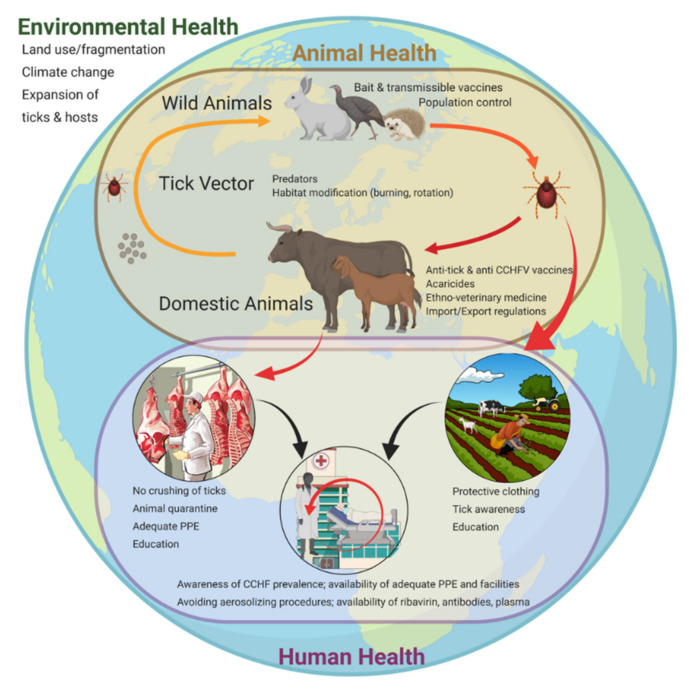Figure 1.
Crimean-Congo hemorrhagic fever virus (CCHFV) routes of transmission and associated intervention measures within the three realms of One Health. Environmental health (outer circle), including climate change and land use, influences several aspects of CCHFV transmission, including tick and animal host distribution and density; tick–animal host interactions affect the overall animal health status and livestock production levels (brown circle). The virus transmission pressure between ticks and animals increases progressively with the life cycle of the tick (reflected by the color gradient of the arrows from light orange to dark orange to red). Human health (purple circle) overlaps with the animal health realm through virus transmission routes, most commonly through tick bites or crushing of ticks, and secondarily through contact with viremic animal blood during the slaughtering process. Human-to-human transmission can also occur in a household or nosocomial setting when no proper personal protective equipment is worn.

